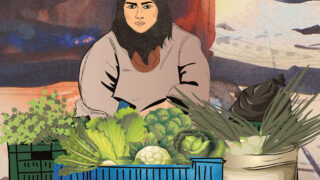Women in Egypt’s slums
Slums offer a horrifying glimpse into the existing class inequality in Egypt. They also reflect the unjust distribution of wealth after it had been taken over by the powerful and influential minority following many years of corruption whose end does not loom anywhere in the horizon.
According to official data, the number of slum-dwellers in Egypt was
Slums offer a horrifying glimpse into the existing class inequality in Egypt. They also reflect the unjust distribution of wealth after it had been taken over by the powerful and influential minority following many years of corruption whose end does not loom anywhere in the horizon.
According to official data, the number of slum-dwellers in Egypt was estimated at 15 million back in 2007, 20 per cent of whom lived in the Cairo governorate and another 13 per cent in Giza.
If we focus on the situation of women who reside in these slums, the picture becomes even bleaker and so does the suffering.
For instance, the lack of private toilets and bathrooms for each family, and hence the need to share these facilities with many neighbors, creates many difficulties for the population in general, and for women in particular. Additionally, insecurity and the constant fear of harassment are ubiquitous.
Tags:
“Smuggling drugs is easier than smuggling a poem or article out of prison.”
In a fateful moment overseen by family elders and tribal sheikhs, two young men (17 and 18 years old) decided to surrender themselves to Egyptian authorities in a bid to...
In 2024, unidentified leaks brought to light Egypt's transaction involving the sale of Ras El-Hekma City to Emirati investors for $22 billion. This development occurred concurrently with the presence of...
These women have either migrated from the countryside or are from the city. Some were able to improve their economic situation, while others barely make enough to support their families....
In many countries, refugees are more vulnerable than others to sexual violence and other crimes, since they are perceived as outsiders and defenceless targets. This vulnerability is aggravated by their...
The Egyptian woman is not only part of the question of irregular migration for being a migrant herself. Another facet that concerns her and seems more widespread is the fact...







